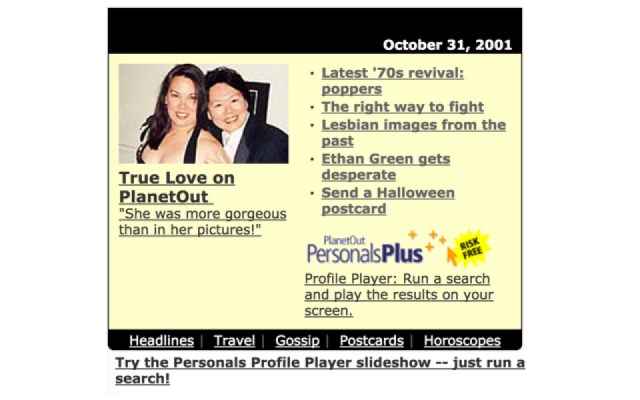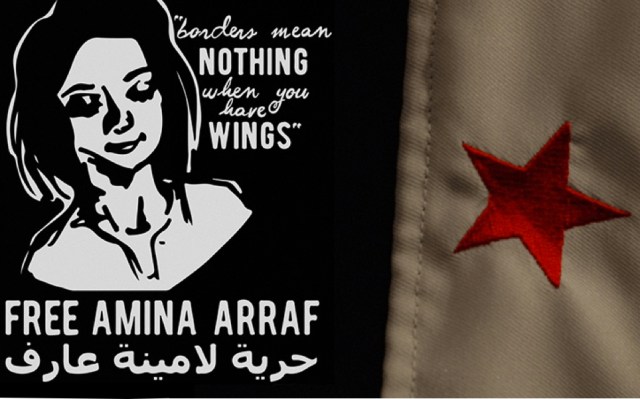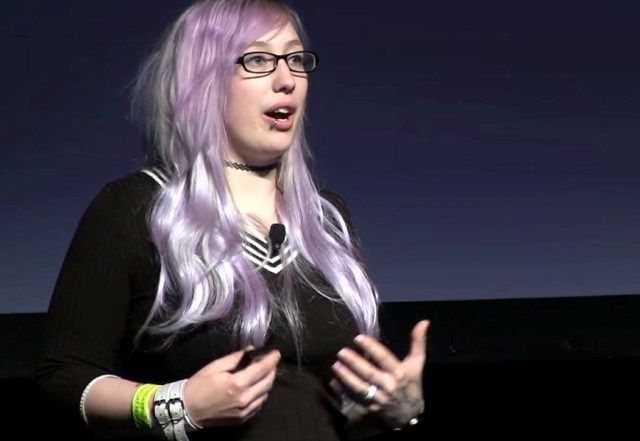On the internet, so the saying goes, nobody knows you’re a dog. It’s been almost 25 years since Peter Steiner coined the phrase in The New Yorker and the sentiment has never been less true. For one, Microsoft literally released an app last year that can detect whether it’s looking at a dog or not. Of course, detecting species is small fry compared to the data being gathered on us every time we open an app or visit a website today. As tech humanist Kate O’Neill has put it, the internet still might not know you’re a dog, but “…now Amazon shows you bones you might like, you get Facebook ads for treat subscription boxes, and Foursquare knows you like hydrants”. The old instant messenger requests for age/gender/location have exploded into a record of every selfie and status update and location check-in, all linked to your real face and name. Silicon Valley has decided that the benefits of the web they’ve built are worth us giving up our privacy, and when I can look up an address, order a taxi to take me there and order dinner for afterwards without looking up from my phone, I find it hard to disagree. But as the amount of data tech companies expect us to provide and broadcast continues to grow, it’s a transaction that’s becoming increasingly dangerous for their marginalised users.
LGBTQ folk have used the internet as a space to socialise, find information and explore their identity since its earliest days. As long ago as 1997, a majority of queer youth were reporting coming out online prior to real life and in that same year, academic David F. Shaw described the internet as the “new gay bar” in his study of gay men’s online communication. But the internet created a whole new scale – anyone who could get online had, for the first time, instant access to a global LGBTQ community. The blogs, chat rooms, message boards and IRC channels that housed it could provide not just the convenience of 24-hour accessibility from around the world but safety as well. Users could be identified only by their username and, if you were lucky, an avatar. This anonymity (or, more accurately, pseudonymity) created an environment where, no matter who you were in the real world, it was possible to express your desires and try on identities without fear of real-world repercussions.
“Often for LGBTQ people, anonymity is a prerequisite for understanding themselves without risk,” said designer Ivana McConnell, who has spoken and written on identity and anonymity online, “When you’re anonymous, you can’t be personally scrutinised, doxxed, or otherwise judged by people before you’ve had a chance to solidify those aspects of your identity that you’re sure are you.”

As the internet started to grew into what it is today, however, that anonymity began to be lost. Advertisers quickly realised the web’s potential to track and target customers and the explosion in tailored advertising over the 2000s meant spending your lunch break on a gay chatroom could result in all the websites you visit on your work computer advertising hook-up sites and gay holiday destinations. Despite the danger this posed, websites catering to the LGBTQ community – the biggest of which, like PlanetOut and Gay.com, had become multi-million dollar media conglomerates – relied on the income from ad spending to survive, and in 2000 they even set up their own gay advertising network.
MySpace would launch three years later and by 2006 it had become the most visited website in America. MySpace and its rival social networking sites took a shift that had already begun with the adoption of email-based instant messaging systems like MSN Messenger and AIM and kicked it into high gear; existence on the web ceased being an experience based on anonymity and began to revolve around authenticity. Rather than socialising pseudonymously in groups based on shared interests, social media encouraged users to sign-up under their real name and connect with their real world friends. No longer could your online and offline lives be kept separate – anything you did or said on the internet could come back to bite you in real life.
For lots of people, though, that’s not necessarily a bad thing. In recent years, online anonymity has come to be associated with the trolls and harassers that frequently target LGB and especially trans people. Proponents of the online disinhibition effect, first outlined in 2004, argue that a detachment between real-world and online identity leads to abuse by creating an environment where people can engage in aggressive behaviour without consequences. Anyone looking to argue for the harm anonymity can cause the queer community only has to point towards the rampant homophobia and transphobia found in anonymous spaces like 4chan, Reddit or Yik Yak (prior to its closure earlier this year, after a failed attempt to implement permanent usernames resulted in users abandoning the app in droves).
Anonymity can also provide a cover for deception within the community, as demonstrated by the blog A Gay Girl in Damascus back in 2011; purportedly run by Amina Abdallah Arraf al Omari, a Syrian-American lesbian, it was in fact being written by a straight American man called Tom MacMaster. Before being exposed in an article by The Electronic Intifada, MacMaster had triggered an international campaign to get Amina out of Syria and tricked a woman into entering into an online relationship.

Following the discovery of the hoax, the now defunct grassroots site Gay Middle East published a pair of posts by two Syrian LGBTQ activists highlighting the danger faced by LGBTQ bloggers in Syria, including the risk of arrest or interrogation by the secret police. Anonymous blogs were the only way activists could organise and have a voice in relative safety. For all the harm popularly associated with online anonymity, anonymity can often be the only shield allowing LGBTQ folk to safely exist online, even in countries where being outed doesn’t run the risk of imprisonment or execution. Queer and trans people (especially those who aren’t male or white) are disproportionately likely to be targeted by doxxing sites like kiwifarms or 8chan’s /baphomet/ board, whose users take advantage of the long trail of online history most of us now have to our names to track down and spread their targets’ personal information.
In the US, LGBTQ youth experience almost three times as much harassment online compared to non-LGBTQ youth. In stark contrast to the days when the internet provided a safer alternative to physical queer spaces, the removal of anonymity as an option means queer and trans folk are increasingly being forced to choose between their safety and the ability to participate fully in an LGBTQ community which has largely moved online. As McConnell argues, “LGBTQ people (or those who think they may be anything other than straight and male-identifying) need freedom to explore and reinforce those identities, and the problem with discouraging anonymity is that it forces people to (1) come out (as it were) before they’re ready, and risk abuse or (2) not come out and not explore at all, for fear of retribution.”
If the rise of social media broke the divide between our online and offline identities that once sheltered vulnerable LGBTQ folk, the explosion of the internet into almost every aspect of our lives over the last decade has destroyed it forever. Now, voice assistants like Google Home and Amazon Echo live in our homes and listen to everything we say; the new Amazon Echo Show will allow your contacts to ‘drop in’ on a live video broadcast from your device whenever they want. In the same week as the Echo Show’s release, Snapchat dropped their new feature, Snap Map, which plots your location on a map whenever you open the app and shares it with all your friends. Your Roomba might even me mapping your home so the company can sell that information to advertisers.
Tech companies may send their employees to march in Pride and create rainbow-coloured versions of their logos, but features like these serve to highlight the dearth of LGBTQ voices in Silicon Valley. While both were greeted with excitement in the mainstream tech world, any queer person would be able to tell you the danger inherent in your family being able to view a live feed of your home at any point without your permission or your friends tracking your location to the local gay bar. Even apps designed for the LGBTQ community like Grindr and Her can contain privacy-destroying exploits. And for all that queer visibility online has exploded in the last decade, the LGBTQ-specific websites that we might have expected to represent these concerns have gone the way of the gay bars and businesses they replaced and almost all folded; instead, with rare exceptions like Autostraddle, we’re dependent on straight-owned corporate media giants like Buzzfeed orVice.

As the internet drifts further from the safe haven it once represented, a growing number of people, both queer and straight, are looking for a way to fix what we’ve been left with. For many of them, it’s anonymity itself that’s the problem, and the key to protecting vulnerable groups online is an even greater emphasis on users’ real-world names and faces. But you can’t ignore that many of the internet’s worst abusers openly operate under their legal names, and that the anonymity that protects the Twitter troll also protects the trans kid looking for support.
Zoë Quinn, game developer and co-founder of Crash Override Network, a helpline and advocacy group for people experiencing online abuse, agrees. “It’s not anonymity that is the enemy…one of the reasons I was able to deal with being a queer teenager is that I could go online while living in a scary rural town where they did not like gay people and talk about my feelings with other people who shared that…I could not have done that under my name,” she told the audience at XOXO Festival in 2015. “It’s not anonymity that’s the problem…anonymity is sometimes the only thing keeping people people safe.”
The promise of the early internet as a playground to explore our identities away from the real world has long disappeared. Silicon Valley has made online identity into a monolith; users are expected to have one name and one face, which they’re happy to show to everyone from their colleagues to their Tinder date to complete strangers. Every part of your life should be connected and made visible to everyone. Not many of us would want to give up the conveniences of the modern web and return to the days of dial-up modems and midi files, but that’s a demand that seems increasingly untenable in a world where the wrong post going viral can result in a Nazi calling a SWAT team to your house.
Who hasn’t experienced that moment of hesitation before posting something, when you’re not sure who’s going to see it and how they’ll react? As queer folk, we live in that moment. We can be entirely different people depending on who’s watching, with different lives and loves and names. How can all that be compressed into a single user account? It’s a question the tech industry has largely avoided answering so far. But with privacy concerns and anger over online harassment mounting, it won’t be able to for much longer.







